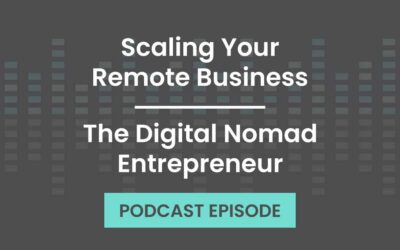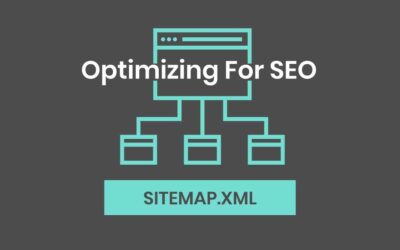The Back End
The “back end” of your WordPress site is everything that your visitors do not see, including your “Dashboard,” FTP folder, and SQL databases. This is where you and your web developers and content managers configure your site’s content and code. By keeping everything updated, backed up and secure in the back end, you can ensure a better experience for your users.
Plugins and Theme Maintenance
One of WordPress’ best features is its extensive customizability. Enterprising developers have developed thousands of themes and plugins to expand and personalize your site. Every time these developers update their themes and/or plugins, you need to update the version on your site as well so they work optimally for your end-user. Unfortunately, these extra bits of software aren’t always maintained as often as they should be, and sometimes different plugins you and your team have implemented don’t always play well together.
As part of optimizing your site, you should ensure that you regularly install updates from the developers, and remove any plugins or theme components that are in conflict. Whenever WordPress itself releases a new version, that needs to be updated as well. This WordPress performance tuning is crucial to not only keeping your site running smoothly, but also protecting it from cyberattacks.
Website Speed Optimization
A slow website is a dead website. People simply do not have the patience to wait even 4 seconds for a site to load, according to studies. If your site takes a long time to come up, you’re facing a lot of missed opportunities to generate leads and acquire customers. To improve your speed, there are several key back-end tasks to do:
Install a caching plugin. While browsers “cache” content from websites so that the site can be loaded more quickly when the user returns, first-time visitors to your site don’t have that benefit. With a caching plugin, you can show a cached, static version of your page that’s “pre-loaded.” This reduces the time that new visitors have to wait for your site to load.
Optimize images. Big, beautiful images are the bread-and-butter of modern website design. Unfortunately, they hog a lot of space and take more time to download and display to your visitors. You can either compress the images before you add them to WordPress or use a special plugin to do so. Either way, this will help your site load more quickly.
Use a CDN. A Content Delivery Network is a way to store your static resources, such as scripts, CSS files, and fonts, geographically closer to your users. As a rule of thumb, the closer the host is to the user, the faster the file loads. Modern WordPress sites may have dozens if not hundreds of small files that need to be loaded. These add up, causing site delays. A CDN streamlines this process.
The Front End
Once your WordPress site has a strong foundation, it’s ready to host amazing content. Make no mistake: the speediest, sleekest, most beautiful WordPress site in the world won’t net you any customers if you don’t have good content. The way that the content is delivered and organized
matters, too. Below is what to keep in mind.
Authentic, Organic Content
If you’ve ever seen a website with content that’s either horribly generic or overstuffed with keywords, you’ve probably steered clear of it. After all, a company that doesn’t bother to connect with you isn’t worth your business, right? Apply this principle to your own content. It needs to be engaging and personable, not to mention have proper formatting and spelling.
Go through this checklist for every page on your site:
- The content is unique to your business. It’s okay to be inspired by your competitors, but you should never, ever plagiarize or spin content. Write all copy in your brand voice and for your target audience. Use real photos of your team and products rather than generic stock images.
- The content is valuable to your audience. The first step toward a lasting customer relationship is to show that you can solve people’s problems. Publishing helpful content on your site is crucial to gaining trust. From your blog to your sales page, think about solutions before promotion.
- The content is optimized for search engines. SEO encompasses many different parts of your website, but one of the most effective things you can do is make sure your content is ready to be scanned by crawlers. Optimize your page titles, use plenty of white space, and organically use your target keywords throughout the content. You can use a WordPress SEO plugin, such as Yoast or Rank Math, to enhance the SEO of each page.
Good Organization and Intuitive Navigation
Save the crazy filing schemes for your personal office.
Your website should be organized in a way that makes sense for your target audience. All navigation components, including menus, sidebars, and page anchors, should be clearly identifiable and easy-to-understand. In short, it’s important to make your WordPress site “customer-facing” rather than “company-facing.”
WordPress makes it easy to build and customize menus and sidebars, so take advantage of that functionality. Some plugins allow you to customize these navigation components on each page. While you shouldn’t make drastic changes from page to page, this can be helpful if your users would benefit from having targeted information displayed on a certain page. Don’t forget to make all menu and sidebar labels concise and compelling.
Conclusion
WordPress is incredibly powerful for organizing and delivering content. It’s also quite customizable for your unique business needs. To offer the best experience for your prospects, take the time to maintain and optimize your site from the back end to the front end. The key is to strike a balance between a cluttered, complicated site and a bare-bones one. Remember, content is king!
If you’re overwhelmed by all the tasks above, fear not: FocusWP offers Website Maintenance plans that allow your site to stay secure, stable, and speedy with regular backups, plugin & theme updates, security scans, performance monitoring and more with a cost-effective maintenance package.
Contact us today and let us put your sites in good hands.






0 Comments